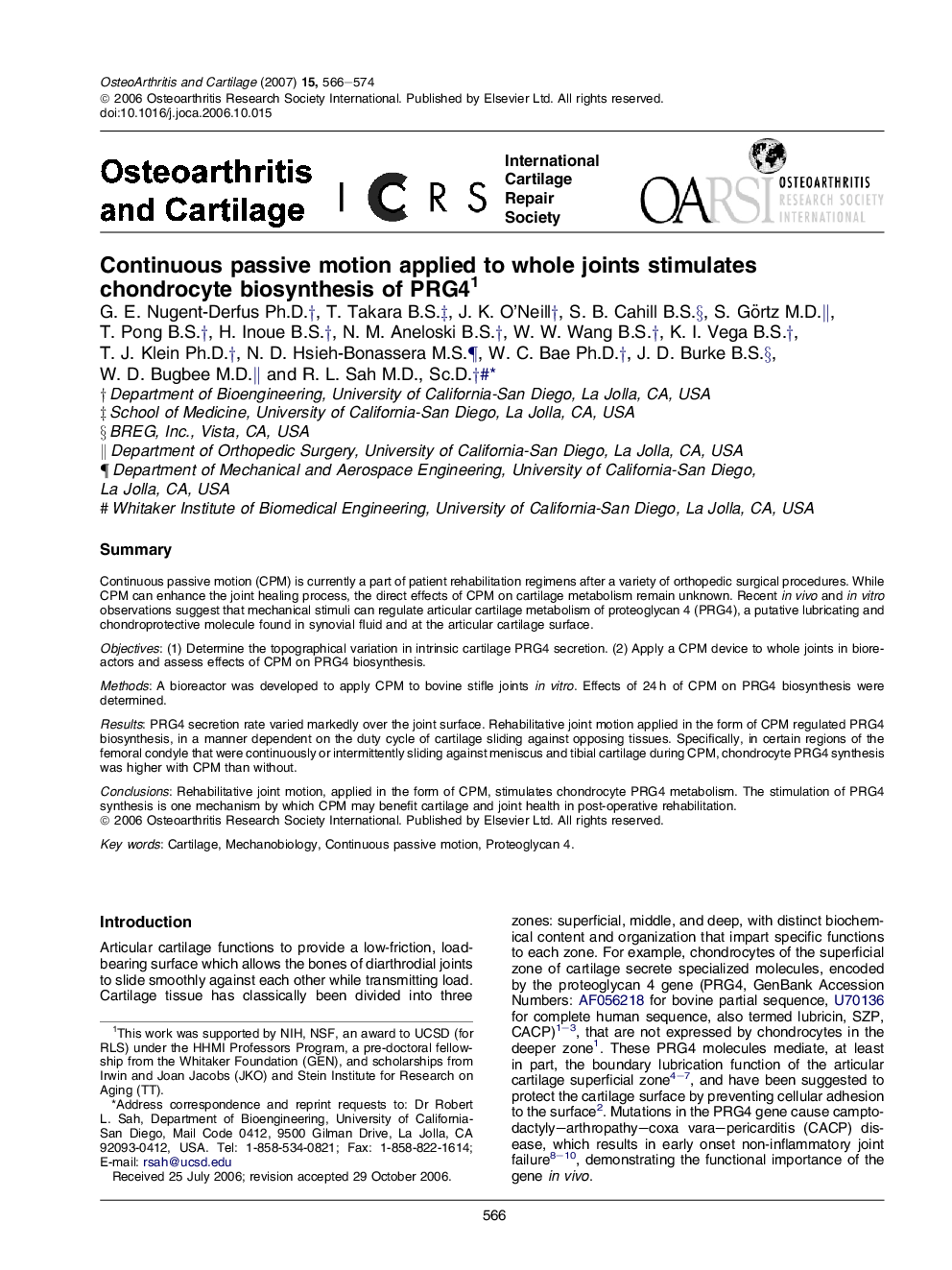| Article ID | Journal | Published Year | Pages | File Type |
|---|---|---|---|---|
| 3381852 | Osteoarthritis and Cartilage | 2007 | 9 Pages |
SummaryContinuous passive motion (CPM) is currently a part of patient rehabilitation regimens after a variety of orthopedic surgical procedures. While CPM can enhance the joint healing process, the direct effects of CPM on cartilage metabolism remain unknown. Recent in vivo and in vitro observations suggest that mechanical stimuli can regulate articular cartilage metabolism of proteoglycan 4 (PRG4), a putative lubricating and chondroprotective molecule found in synovial fluid and at the articular cartilage surface.Objectives(1) Determine the topographical variation in intrinsic cartilage PRG4 secretion. (2) Apply a CPM device to whole joints in bioreactors and assess effects of CPM on PRG4 biosynthesis.MethodsA bioreactor was developed to apply CPM to bovine stifle joints in vitro. Effects of 24 h of CPM on PRG4 biosynthesis were determined.ResultsPRG4 secretion rate varied markedly over the joint surface. Rehabilitative joint motion applied in the form of CPM regulated PRG4 biosynthesis, in a manner dependent on the duty cycle of cartilage sliding against opposing tissues. Specifically, in certain regions of the femoral condyle that were continuously or intermittently sliding against meniscus and tibial cartilage during CPM, chondrocyte PRG4 synthesis was higher with CPM than without.ConclusionsRehabilitative joint motion, applied in the form of CPM, stimulates chondrocyte PRG4 metabolism. The stimulation of PRG4 synthesis is one mechanism by which CPM may benefit cartilage and joint health in post-operative rehabilitation.
